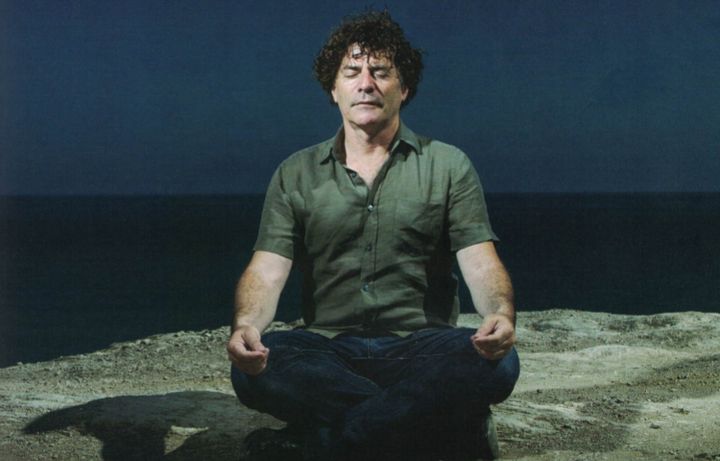
JONATHAN SCHOOLER
“I dream constantly. Mostly while I’m awake.”---Giorgio Sant’ Angelo
Inspired by Andy Warhol’s Factory? Not unimaginable. In any case, the John Templeton Foundation, with $5.6M or so from its deep pockets, has given birth to the Imagination Institute---a Philadelphia think tank that for the last two years has been tapping an array of talent for insight into the creative process, hoping ultimately to come up with an “imagination quotient.” Three dozen scientific investigators at 16 institutions have been awarded Templeton research money related to the project. But can imagination really be quantified?
The Imagination Institute, headquartered at the University of Pennsylvania, describes its mission this way:
“The Imagination Institute, an independent non-profit based out of Philadelphia and made possible by the support of the John Templeton Foundation, is dedicated to making progress on the measurement, growth, and improvement of imagination across all sectors of society.”
One of the Imagination Institute’s grantees is University of California, Santa Barbara psychologist Jonathan Schooler. Schooler and UCSB postdoctoral researcher, Claire Zedelius have been awarded $200,000 to find out how daydreaming influences creativity, particularly creative writing. Their interest is in whether intervention---that is, guided daydreaming---can lead to more inspired writing.
Schooler is from a family of psychologists. His great uncle, mother, father, aunt, uncle, brother, cousin, ex-wife, brother’s wife, and son have all been involved in the study of psychology---which is clearly reflected in Schooler’s fluid, easy delivery. Indeed, he doubled-booked the time of our interview, which follows. As we discussed Einstein, Schooler’s hairdresser was en route to shape his summer curls (and was fortunately delayed).
Jonathan Schooler is a professor of psychology and brain science at UCSB. His MS and PhD are in psychology from the University of Washington and his BA (cum laude) from Hamilton College. He has taught psychology at the University of Pittsburgh, University of British Columbia, and University of Virginia.
Schooler is co-editor of the book Scientific Approaches to Consciousness and currently serves on the editorial boards of the following journals: Consciousness and Cognition; Social Cognitive and Affective Neuroscience; Journal of Imagination; Cognition and Personality; Psychology of Consciousness: Theory Research and Practice; as well as the Encyclopedia of Consciousnes (Elsevier). He is a consultant for NASA, and a member of the advisory board of the Lifeboat Foundation and Neuroleadership Institute.
He has been honored as an Osher Fellow (Exploratorium Science Museum), Fellow of the Association for Psychological Science, and Fellow of the Society for Experimental and Social Psychology, among other distinctions.
Suzan Mazur: In your development of a “compact measure of the kinds of daydreams that are routinely created by our imagination,” you explore a six-factor model: (1) pleasant daydreaming, (2) planning, (3) meaningful daydreaming, (4) sexual thoughts, (5) unaware, and (6) bizarre or fanciful daydreaming.
You’ve indicated that planning, meaningful, and bizarre or fanciful styles, particularly, relate to creative behavior. How much of the day do you spend daydreaming and which of the above six would you say primarily account for your daily imaginings?
Jonathan Schooler: A good 50% of my day is probably spent in some kind of reverie. For me the meaningful and planning daydreaming are the most substantial with respect to that measure.
Suzan Mazur: You’ve also reported that “curiosity-driven daydreaming (particularly when it is deprivation-based) is related to creative behavior.” Are you referring here to the starving artist, to some of our best art emanating from situations where the artist is suffering one way or another?
Jonathan Schooler: I have a separate paper on that. There is somewhat of a relationship between manic depression and creativity, that whole cycle going from the highs to the lows may, in addition, fuel creative fire. But, when we talk about deprivation it doesn’t necessarily mean the person is necessarily suffering.
I suspect that Einstein when he was imagining, trying to understand some of the questions that obsessed him, that he was engaging in this type of deprivation-based curiosity.
Suzan Mazur: Einstein is thought to have had Asperger’s. Like many great scientists, somewhere on the autism spectrum.
Jonathan Schooler: The kind of deprivation we’re imagining playing out in our model is one in which there’s a problem, where there’s a creative question that you are grabbed by but just have not been able to fully solve.
Indeed, that’s a big part of the way I spend my creative daydreaming, on this very problem, that is: How can we take this idea about the way in which answers to previously unsolved questions remain accessible to us, and transfer that insight into further research on the nature of creative daydreaming.
Suzan Mazur: Have you studied right and left handedness in relation to daydreaming and imagination?
Jonathan Schooler: No, actually, although I have looked at hemispheric differences and their involvement in creative insight. In one study we found that when we flash a hint about the creative problem to the left visual field, which goes to the right hemisphere, that people are better able to solve a problem than if we flashed the hint to the right visual field, which goes to the left hemisphere. So there do seem to be some hemispheric differences associated with creativity. Handedness has some relationship to hemispheric dominance. It is plausible there could be a relationship between handedness and creative daydreaming. It’s an interesting hypothesis.
Suzan Mazur: Several of your studies have looked at creative writing. Historically, literary talent--- Hemingway, Mailer, Hoagland, Brodsky---have cited privacy as being paramount to creative writing. Joseph Brodsky in accepting the Nobel Prize in Literature---and admitting that he was “somewhat uncomfortable” doing so---said this:
“If art teaches anything (to the artist, in the first place), it is the privateness of the human condition.”
And:
“Regardless of whether one is a writer or a reader, one’s task consists first of all in mastering a life that is one’s own, not imposed or prescribed from without. . . . Aesthetic choice is a highly individual matter, and aesthetic experience is always a private one.”
However, you’ve reported that in at least one of your studies you prompted aspiring writers by phone periodically, guiding them in their fanciful daydreaming. Isn’t this contrary to our understanding of the nature of artistic expression?
Jonathan Schooler: To be clear, we weren’t trying to guide them in their creative daydreaming. We were simply trying to assess what they were daydreaming about. We asked them about daydreams that had already passed. I don’t think that we were unduly manipulating them, and all of the individuals who participated in the experiment understood what they were going to be asked to do ahead of time.
That said, I do think that privacy was an issue for at least one writer. I received a nice note from one participant who essentially said, thank you for the opportunity to participate in the study but I discovered as I engaged in it that my daydreams are quite private and not easily shared.
So at least one writer did have that reaction. But we weren’t asking for greatly detailed personal elements of their mind wandering and I think many writers found it to be stimulating
Suzan Mazur: In your Study 9---“Can an intervention using intentional daydream improve aspiring writers’ creative writing?”---you note the following:
“In the guided daydreaming condition, participants will receive instructions to guide them to daydream in a manner consistent with DDQ [daydreaming questionnaire] style bizarre/fanciful daydreaming. Participants will be instructed to observe their thoughts, and to disengage from a thought when it is mundane. . . . We will use a smartphone app to send participants reminders and brief instructions to facilitate the training. Moreover, after each daydreaming session, participants will be asked to complete short (ca. 5 minutes) measures of creative inspiration and behavior, mood, and a short creative writing task; participants will be asked to take a few minutes to come up with creative metaphors. We will assess both the number and the quality/creativity of the metaphors as indicators of creativity. (We have recently found this measure to be related to other measures of creativity in an unrelated study.)
We expect that, relative to the no intervention and unguided daydreaming conditions, daily practice in guided bizarre/fanciful daydreaming will enhance creative inspiration and lead to more original creative writing. . . . This study will be the first that could provide experimental evidence that daydreaming is causally involved in inspiring creative ideas or a curiosity for creative pursuits.”
Jonathn Schooler: The study that you describe is just beginning to be run as we speak so I don’t have much to tell you about it. However, we are hopeful that encouraging people to take time out of their day to daydream about interesting or bizarre thoughts may help to prime the creative well.
Suzan Mazur: Brodsky also said that literature is “the goal of our species,” because it is speech that distinguishes us from other animals.
But as a culture we seem to be getting increasingly more visual. People tend to scan a page rather than read it. Tweet rather than compose Proust-like paragraphs. Is our ability to produce the kind of literature that Brodsky, Hemingway and Hoagland have produced largely coming to a close because our language and culture have morphed? For example, Mailer described the American culture as having become more “loutish.” Adrian Bejan, a distinguished professor of engineering at Duke, has gone so far as to rename homo sapiens: “the human and machine species”? What are your thoughts?
Jonathan Schooler: I’m not sure if I’m qualified to make an evaluation of literary contributions of the present with the past. But I would say that there are many outstanding, excellent authors. From my perspective your appraisal of the future of literature is perhaps overly pessimistic.
Suzan Mazur: But do you agree that the language and culture have morphed and continue to morph?
Jonathan Schooler: People are still reading books. The proportion of the population worldwide that is educated is greater than it’s ever been, so the opportunity for people to read is substantial.
Suzan Mazur: But are we reading in the same way?
Jonathan Schooler: I think that that is an empirical question. We certainly are reading newspapers differently. We don’t sit down with a newspaper the way we did in the past. But people are reading on their tablets and on their phones, and listening to audio books. So I’m not persuaded that the transfer to bite-sized morsels of information necessarily undermines our literary interest.
I do, however, think there is a risk that the constant responding to cell phones and to having every moment filled with situations where people are trying to extract these small bits of information may have influences on mental state---including less enduring mind-wandering episodes. The way people are now extracting information may color cognitive processes in potentially ways less conducive to imagination. But there are so many other forces at play it’s hard to know if this reduces the appetite for good, quality literary material.
Suzan Mazur: What do you think Andy Warhol would say about your daydreaming model?
Jonathan Schooler: He really did try to get people to notice the bizarre in the everyday and he appreciated how inspiring that could be in helping us to see new meaning in familiar things. I would like to think he’d be very enthusiastic that we’ve found that these dimensions of bizarreness and meaning---which he was so good at evoking---may be important components of the process of creative daydreaming.
